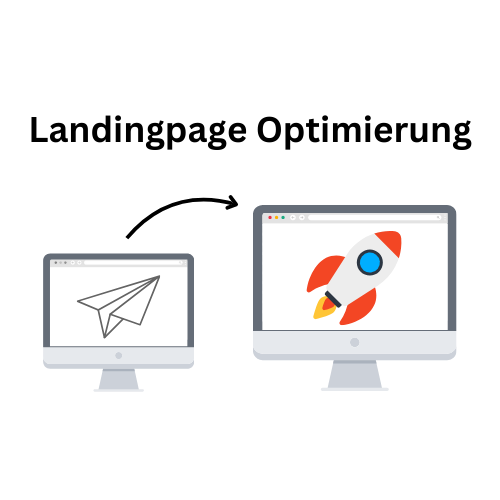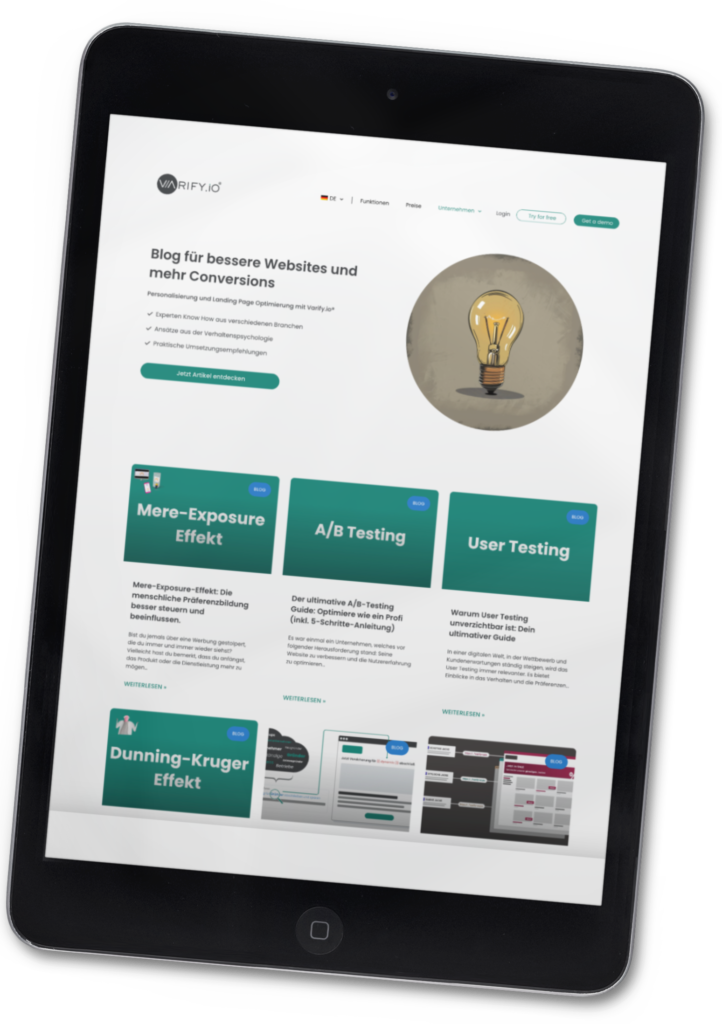
The right optimization of your landing page can make all the difference in whether a visitor takes your desired action or not.
A well-designed site not only helps you to achieve more conversions, but also improves the user experience and the trust of your visitors.
By making targeted adjustments, you can ensure that your landing page works effectively and does exactly what it is supposed to do: Convert visitors into satisfied customers.
In this article, I'll show you 10 practical tips that you can use to optimize your landing page and increase your conversion rate.

Table of contents
What is landing page optimization?
Definition of
Landing page optimization refers to the process of making targeted adjustments and improvements to landing pages in order to maximize their performance. The main goal of landing page optimization is to increase the conversion rate - the percentage of visitors who complete a desired action, such as making a purchase, filling out a form or signing up for a newsletter. Through continuous testing and analysis, various elements of the landing page can be optimized to improve the user experience and achieve conversion goals more efficiently.
Meaning
In today's digital world, it is essential that your landing page works. It can help you generate more leads, improve the quality of those leads and increase the satisfaction of your visitors. With the right optimization, you can ensure that your page delivers the results you want and gives you the competitive edge.
Landing page optimization process
The landing page optimization process can be divided into several steps:
2. A/B testing: Based on the identified weaknesses, different variants of the landing page are created and tested. In A/B testing, a new variant of the page is tested against the original version to find out which changes deliver the best results.
3. evaluation: The results of the tests are evaluated to determine which adjustments had the best impact on conversion rates. Based on these findings, the successful changes are implemented and further optimized.
When should you optimize the landing page?
Timing
The optimization of your landing page should be considered if certain signals indicate inadequate performance. These include low conversion rates, high bounce rates, low dwell time or negative user feedback. If you notice that your landing page is not delivering the desired results, it's time to take action. Another clear sign of the need for optimization is when market conditions change, new competitors emerge or your target audience changes.
Ongoing Process
It is important to understand that landing page optimization is not a one-time project, but an ongoing process. Even if your page is currently performing well, this does not mean that it will continue to deliver the same results in the future. Changes in user behavior, technological developments and new marketing trends require regular reviews and adjustments. Through continuous testing, data analysis and improvements, you can ensure that your landing page is always up to date and performing optimally.
In practice, this means always keeping an eye on your key metrics and being ready to react quickly to changes. Regularly testing different elements - from the headline to the call-to-action (CTA) to the entire page design - helps you to always get the best out of your landing page.
Landing page optimization: 10 important tips for perfect implementation
1. minimalist design
A minimalist design on your landing page focuses the visitor's attention on the desired action, be it filling out a form or clicking on the CTA. By reducing unnecessary elements such as additional form fields, navigation bars or links that distract from the main goal, you create a clear and simple user experience. This clarity helps your visitors to make decisions more quickly and therefore increases the likelihood of a conversion. Less distraction means more focus on what really matters - your conversion goals.
2. clear and valuable message
Communicating the added value of your offer is crucial to attract the attention of your visitors and motivate them to take action. Your headline should be concise and appealing, while the CTA clearly and convincingly demonstrates the benefits for the user. By tapping into the language and needs of your target audience, you address their desires and problems directly, which builds trust and increases the likelihood that the visitor will take the desired action. A strong value proposition can make all the difference in the conversion rate.
3. above the fold
4. fulfill context and expectation
5. credibility and trust
6. visual cues
7th Hero Shots
8. live chat
9. load time optimization
10. A/B tests
Typical mistakes in landing page optimization and how to avoid them
1. overloaded design
2. unclear call-to-actions (CTAs)
3. slow loading times
4. too many distractions
5. lack of trustworthiness
How to avoid these mistakes
Helpful tools for landing page optimization
Successful conversion rate optimization requires the targeted use of powerful tools. These tools not only enable the collection and analysis of extensive data, but also support A/B tests, the creation of heat maps and the precise examination of the user experience (UX). The most common web analytics tools include Google Analytics and Matomo, which provide valuable insights into the behavior of your website visitors.
For A/B tests, Varify.io offers the ideal solution. With Varify.io, you can easily test different versions of your landing page and precisely analyze their impact on the conversion rate. The tool is designed so that it can be used without extensive programming knowledge. It allows you to make targeted changes and evaluate whether the results are statistically significant - a crucial step in making informed optimization decisions and continuously improving your conversion rate.
In addition, heatmap tools such as Hotjar or Crazy Egg offer deeper insights into the click behavior and scroll depth of your visitors. This visual data helps you to optimize the user experience and identify potential problem areas on your landing page.
Survey tools such as SurveyMonkey or Typeform are ideal for obtaining direct feedback from your visitors, as they allow you to collect valuable information directly from your target group.
By combining these tools, you create a solid foundation for comprehensive optimization of your landing page. This integrated approach ensures that your optimization measures are not only carried out effectively, but are also continuously reviewed and improved to achieve the best possible results.

